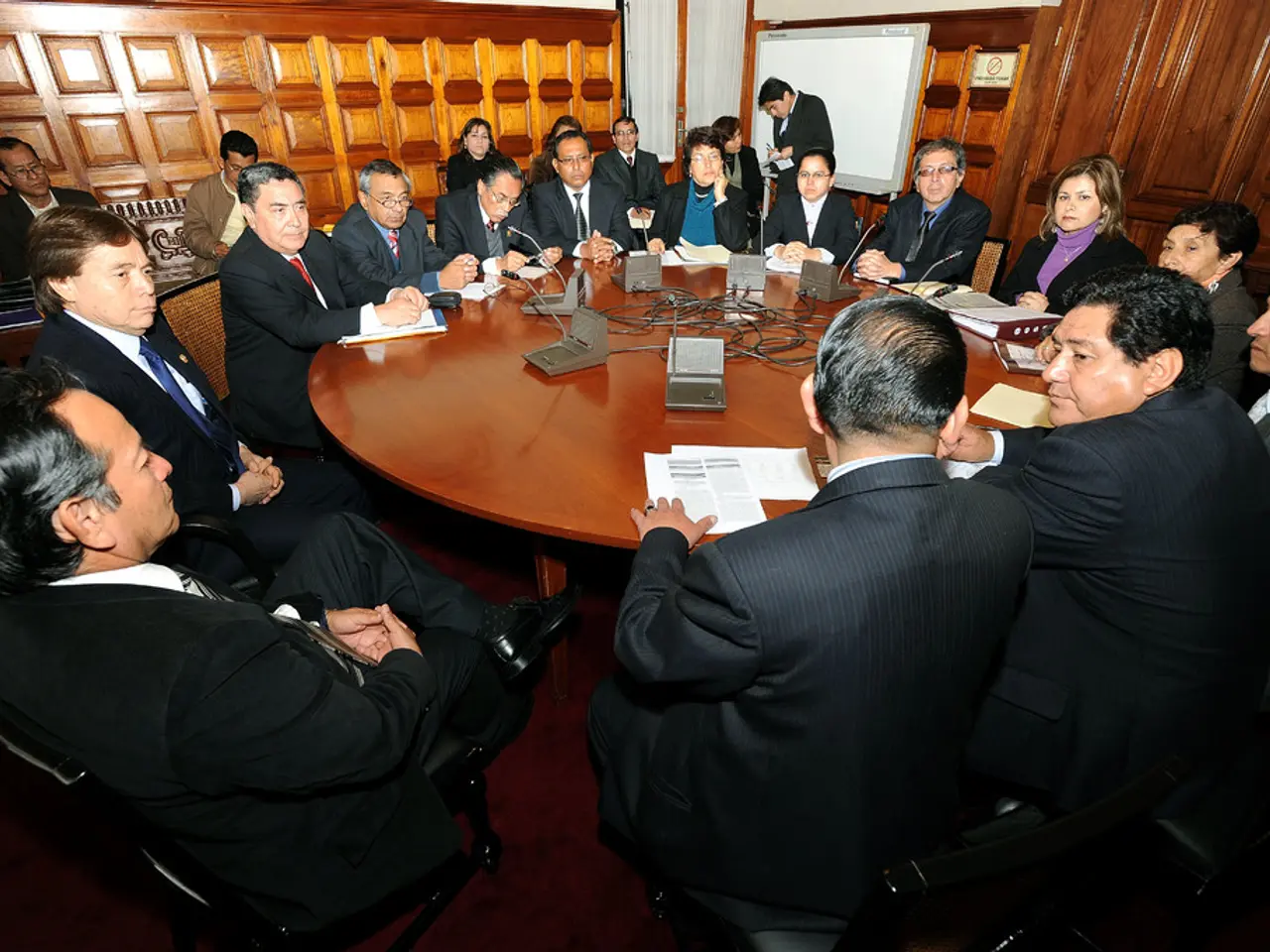Diplomats from the United States and China converge once more to negotiate an expansion of the existing tariff truce.
The latest round of U.S.-China trade negotiations concluded in Stockholm without reaching a new trade deal, but both sides agreed to continue working towards extending the current 90-day tariff truce. The truce, initiated after talks in Geneva earlier in May, has paused escalating tariffs between the two countries.
The U.S. President is expected to decide soon whether to approve this extension, likely maintaining the truce for another 90 days if approved. Without an extension, tariffs would revert to significantly higher rates, including previous duties imposed during the Trump administration, raising the average tariff rate back up to around 80% or more.
Despite these efforts, key disagreements remain unresolved, and the recent Stockholm talks did not produce substantial progress beyond prior rounds in Geneva and London. Analysts describe the current situation as a stalemate, with both sides essentially waiting for a shift in circumstances to enable a breakthrough. However, the commitment to continue negotiations indicates a mutual interest in preventing the trade conflict from intensifying further in the near term.
Thibault Denamiel, a fellow at the Centre for Strategic and International Studies, stated that an extension of the U.S.-China deal to keep tariffs at reduced levels would show that both sides see value in continuing talks. An extension of lower tariff levels is on the table during the negotiations.
The threatened tariff hikes could raise duties for partners like Brazil and India from a current baseline of 10% to levels up to 50%. The South China Morning Post reports that Washington and Beijing are expected to extend their tariff pause by another 90 days.
The business community is optimistic that the two presidents will meet later this year, hopefully in Beijing. Solid partnerships are needed, according to Denamiel, if Washington wants to diversify supply chains, enforce advanced technology controls, and tackle excess Chinese capacity.
The talks between the two countries are expected to discuss renewing trade negotiations. Emily Benson, head of strategy at Minerva Technology Futures, stated there has been a significant shift in the U.S. administration's thinking on China since the London talks. The U.S. is rushing to strike an agreement, following Japan and the Philippines, which have already reached the outlines of deals with the U.S.
References: [1] Reuters, "U.S. and China agree to extend trade truce, but disagree on key issues," July 30, 2025. [2] Bloomberg, "U.S.-China Trade Truce Set to Expire as Talks in Stockholm Yield Little," July 31, 2025.
- The U.S. and China agreed to extend the current 90-day tariff truce, as reported by Reuters, indicating a mutual interest in preventing the trade conflict from further intensifying.
- The extension of the U.S.-China deal, if approved, would maintain reduced tariff levels, according to Thibault Denamiel, a fellow at the Centre for Strategic and International Studies.
- Without an extension, tariffs would revert to significantly higher rates, potentially impacting partners like Brazil and India, with duties rising to up to 50%.
- The commitment to continue negotiations on renewing trade deals is expected, as stated by Emily Benson, head of strategy at Minerva Technology Futures.
- The business community is hopeful that the two presidents will meet later this year, especially if a breakthrough is to occur, considering that solid partnerships are needed for diversifying supply chains, enforcing advanced technology controls, and tackling excess Chinese capacity.
- Analysts describe the current situation as a stalemate, with both sides essentially waiting for a shift in circumstances to enable progress.
- The discussions between the U.S. and China are anticipated to include policy-and-legislation, technology, general-news, economy, finance, health, Europe, and the world, as elements intertwined with their ongoing trade negotiations.




